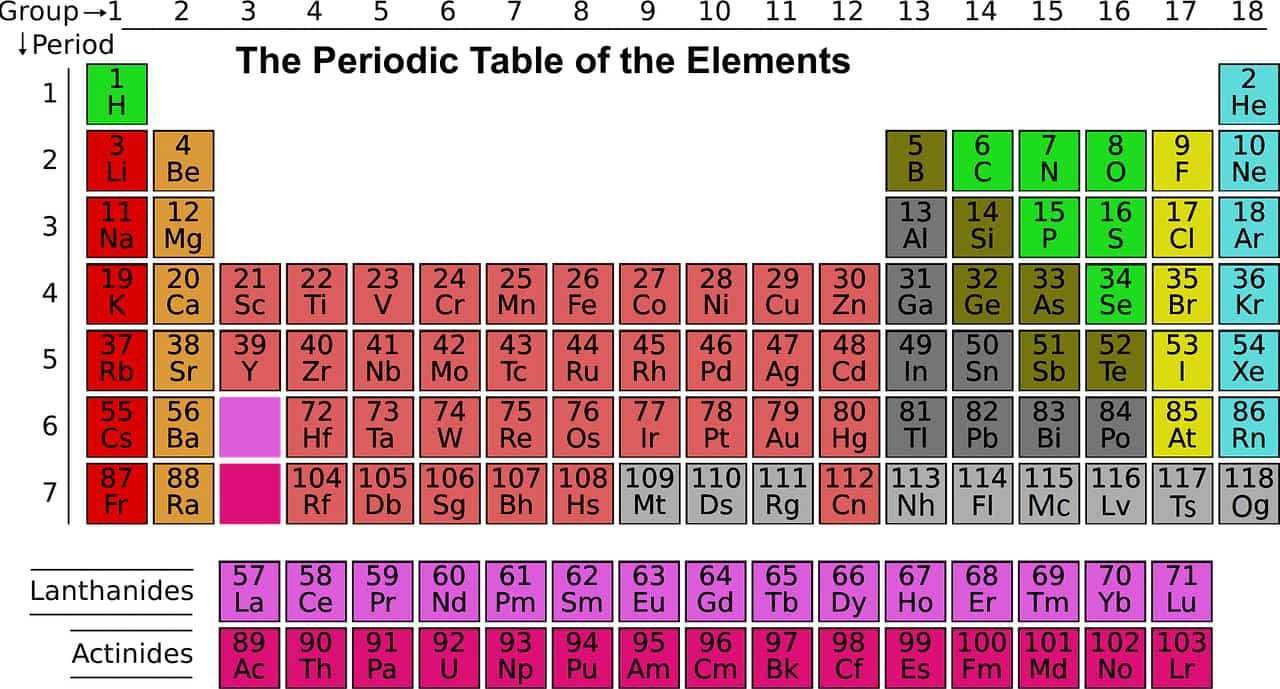Sodium is the chemical element with atomic number 11, symbol Na (from Latin natrium)
The simple body sodium is a soft metal, silvery in color and very reactive, which is one of the alkali metals. Sodium is not found in this form in nature, but it is very abundant in the form of chemical compounds, especially in kitchen salt.
In the body, it is mainly found in the blood and interstitial fluid (fluid located around cells). Its concentration in the blood is controlled by several hormones, including aldosterone and anti-diuretic hormone.
Origin of the name: the name is derived from the English word ‘soda’.
In foods, sodium is generally present in the form of sodium chloride, i.e. salt: 1 g of salt = 400 mg of sodium.
Are salt and sodium the same?
Not really. Salt, whose scientific name is sodium chloride, is made up of two minerals: chloride for 60% and sodium for 40%. Sodium is therefore one of the constituent minerals of salt. In 1 gram of salt, there is actually 400 mg of sodium (noted as “Na +” on food labels). To find out the salt content in the foods you buy, look for the amount of sodium (“Na +”) on the packaging, expressed in mg / 100g, then multiply it by 2.54.
Salt and sodium, what’s the difference?
Salt, sodium, Na, chloride, Cl… We get confused when it comes to reading the salt content on the nutritional value labels on the packaging of the foods we buy! Especially if you have kidney failure. Here are some keys to understand everything.
Whether it is to season dishes or preserve food, salt has been known since prehistoric times. Food essential to life that the body does not produce, so it must be provided through food. Nowadays, we consume too much of it, because it is a valuable ally of the food industry as the main flavor enhancer, but also because it absorbs water which increases the weight of the food. Yet the health risks are proven: too much salt contributes to high blood pressure and the development of stomach cancer. So to protect yourself from it and reduce your consumption, you have to choose your foods well and for that to know the difference between salt and sodium.
Salt is considered a food, the scientific name of which is sodium chloride (NaCl). It is made up of two minerals: sodium (Na), for 40%, and chloride (Cl) for 60%. Sodium is therefore one of the constituent minerals of salt: 1 g of salt is composed of 400 mg of Na and 600 mg of Cl. It is only found naturally in nature in chemical compounds.
Of marine origin, the salt is collected in the salt marshes close to the sea, but also in the ancient seas of rock salt, in the middle of the lands today, as in the Himalayas or in the Andes.
It is found in the form of table salt, but also in most foods – especially shellfish and crustaceans, cold cuts, cheeses, preserves, bread – but also in drinking water, especially sparkling.
Roles in the body
It is essential for the transmission of nerve impulses and for muscle contraction. Its concentration in the blood and interstitial fluid conditions the amount of water present in the cells and the blood volume. In people who are sensitive to salt intake, excess sodium can increase blood volume and thus promote the development of high blood pressure.
Check the Package for Nutrient Claims
The best way to limit your salt intake is to limit processed foods as much as possible, and to read food labels carefully to make the right choice.
Because on the packaging of our food, we can find everything! Sometimes it is the amount of salt per 100 g (0.22 lbs), other times the amount of sodium per 100 g (0.22 lbs), still others the amount of salt per portion or both… You must therefore be particularly careful, know the difference between salt and sodium, and between sodium and potassium, and… know how to calculate!
You can also check for nutrient claims on food and beverage packages to quickly identify those that may contain less sodium. Here’s a guide to common claims and what they mean:
What It Says | What It Means |
| Salt/Sodium-Free | Less than 5 mg (0.005 gram) of sodium per serving |
| Very Low Sodium | 35 mg of sodium or less per serving |
| Low Sodium | 140 mg of sodium or less per serving |
| Reduced Sodium | At least 25% less sodium than the regular product |
| Light in Sodium or Lightly Salted | At least 50% less sodium than the regular product |
| No-Salt-Added or Unsalted | No salt is added during processing – but these products may not be salt/sodium-free unless stated |
Physical properties
Melting point is 97.82°C (208.1°F) and its boiling point is 881.4°C (1,618°F). Its density is slightly less than that of water, 0.968 grams per cubic centimeter. It is a good conductor of electricity.
| Physical properties | |
|---|---|
| Phase at STP | solid |
| Melting point | 370.944 K (97.794 °C, 208.029 °F) |
| Boiling point | 1156.090 K (882.940 °C, 1621.292 °F) |
| Density (near r.t.) | 0.968 g/cm3 |
| when liquid (at m.p.) | 0.927 g/cm3 |
| Critical point | 2573 K, 35 MPa (extrapolated) |
| Heat of fusion | 2.60 kJ/mol |
| Heat of vaporization | 97.42 kJ/mol |
| Molar heat capacity | 28.230 J/(mol·K) |
| Group | 1 | Melting point | 97.794°C, 208.029°F, 370.944 K |
| Period | 3 | Boiling point | 882.940°C, 1621.292°F, 1156.090 K |
| Block | s | Density (g cm−3) | 0.97 |
| Atomic number | 11 | Relative atomic mass | 22.990 |
| State at 20°C | Solid | Key isotopes | 23Na |
| Electron configuration | [Ne] 3s1 | CAS number | 7440-23-5 |
Vapor pressure
| P (Pa) | 1 | 10 | 100 | 1 k | 10 k | 100 k |
|---|---|---|---|---|---|---|
| at T (K) | 554 | 617 | 697 | 802 | 946 | 1153 |
Atomic properties
| Atomic properties | |
|---|---|
| Oxidation states | −1, +1 (a strongly basic oxide) |
| Electronegativity | Pauling scale: 0.93 |
| Ionization energies |
|
| Atomic radius | empirical: 186 pm |
| Covalent radius | 166±9 pm |
| Van der Waals radius | 227 pm |
Other properties
| Other properties | |
|---|---|
| Natural occurrence | primordial (found on Earth) |
| Crystal structure | body-centered cubic (bcc) |
| Speed of sound thin rod | 3200 m/s (at 20 °C) |
| Thermal expansion | 71 µm/(m·K) (at 25 °C) |
| Thermal conductivity | 142 W/(m·K) |
| Electrical resistivity | 47.7 nΩ·m (at 20 °C) |
| Magnetic ordering | paramagnetic[2] |
| Magnetic susceptibility | +16.0·10−6 cm3/mol (298 K)[3] |
| Young’s modulus | 10 GPa |
| Shear modulus | 3.3 GPa |
| Bulk modulus | 6.3 GPa |
| Mohs hardness | 0.5 |
| Brinell hardness | 0.69 MPa |
| CAS Number | 7440-23-5 |
History
| History | |
|---|---|
| Discovery and first isolation | Humphry Davy (1807) |
It has long been recognized in compounds, but it was not isolated until 1807, when Sir Humphry Davy performed the electrolysis of caustic soda. During the Middle Ages, a sodium compound with the Latin name of sodanum was used for the treatment of headaches.
It comes from the Latin name for a Na compound called natrium, which itself comes from the Greek νίτρον (nitron), a natural Na carbonate (natron).
Main isotopes of sodium
| Main isotopes of Na | |||||||||||||||||||||
|---|---|---|---|---|---|---|---|---|---|---|---|---|---|---|---|---|---|---|---|---|---|
| |||||||||||||||||||||
There is only one naturally occurring isotope, Na-23. Isotopes are two or more forms of an element. Isotopes differ from each other according to their mass number. The number written to the right of the element’s name is the mass number. The mass number represents the number of protons plus neutrons in the nucleus of an atom of the element. The number of protons determines the element, but the number of neutrons in the atom of any one element can vary. Each variation is an isotope.
Six radioactive isotopes of Na are known also. A radioactive isotope is one that breaks apart and gives off some form of radiation. Radioactive isotopes are produced when very small particles are fired at atoms. These particles stick in the atoms and make them radioactive.
Two radioactive isotopes of sodium—Na-22 and Na-24—are used in medicine and other applications. They can be used as tracers to follow sodium in a person’s body. A tracer is a radioactive isotope whose presence in a system can easily be detected. The isotope is injected into the system at some point. Inside the system, the isotope gives off radiation. That radiation can be followed by means of detectors placed around the system.
Na-24 also has non-medical applications. For example, it is used to test for leaks in oil pipe lines. These pipe lines are usually buried underground. It may be difficult to tell when a pipe begins to leak. One way to locate a leak is to add some Na-24 to the oil. If oil leaks out of the pipe, so does the Na-24. The leaking oil may not be visible, but the leaking Na-24 is easily detected. It is located by instruments that are designed to detect radiation.
Application
Although metal Na has several important uses, the main application of sodium uses its compounds; Millions of tonnes of sodium chloride, hydroxide and carbonate are produced annually.
- chloride is used widely for anties and defrosting and as a preservative;
- bicarbonate is mainly used for cooking.
- along with potassium, many important drugs have sodium added to increase bioavailability; although potassium is the better ion in most cases, sodium was chosen because of its low price and low atomic weight.
- hydride is used as a base for various reactions (for example the aldol reaction) in organic chemistry, and as a reducing agent in inorganic chemistry.
As Na alone or with potassium, sodium is a desiccant; it gives a strong blue color with benzophenone [en] when dry-dried. In organic synthesis, sodium is used in various reactions such as Birch [en] reduction, and sodium [en] fusion test is carried out to analyze compounds qualitatively.
Na reacts with alcohol to give alkoxides, and when sodium is dissolved in ammonia solution, it can be used to reduce alkyne to trans-alkenes.
Example compounds
Following are some of the significant examples:
- Table salt -(NaCl)
- Soda ash -(Na2CO3)
- Baking soda -(NaHCO3)
- Caustic soda -(NaOH)
- Sodium nitrate -(NaNO3)
- Sodium thiosulfate -(Na2S2O3·5H2O)
- Borax -(Na2B4O7·10H2O)
Biological role
It is essential to all living things, and humans have known this since prehistoric times. Our bodies contain about 100 grams, but we are constantly losing it in different ways so we need to replace it. We can get all the sodium we need from our food, without adding any extra. The average person eats about 10 grams of salt a day, but all we really need is about 3 grams. Any extra sodium may contribute to high blood pressure. It is is important for many different functions of the human body. For example, it helps cells to transmit nerve signals and regulate water levels in tissues and blood.
Natural abundance
It is the sixth most common element on Earth, and makes up 2.6% of the Earth’s crust. The most common compound is sodium chloride. This very soluble salt has been leached into the oceans over the lifetime of the planet, but many salt beds or ‘lakes’ are found where ancient seas have evaporated. It is also found in many minerals including cryolite, zeolite and sodalite.
Because it is so reactive it is never found as the metal in nature. Sodium metal is produced by electrolysis of dry molten sodium chloride.
Safety and prevention
Sodium forms flammable hydrogen and sodium hydroxide when in contact with water; ingestion and exposure to moisture on the skin, eyes or mucous membranes can cause severe burns. Sodium spontaneously explodes in the presence of an oxidizing agent such as water.
Water-based fire extinguishers accelerate burning of sodium; those based on carbon dioxide and bromochlorodifluoromethane should not be used in sodium fires.
Periodic Table of Elements | Complete List of Chemical Elements by Group, Name, Symbol, Color and Type

Sources: Britannica,
Photo credit: Wikimedia Commons
Photo explanations: Sodium chloride (salt) – crystals.


